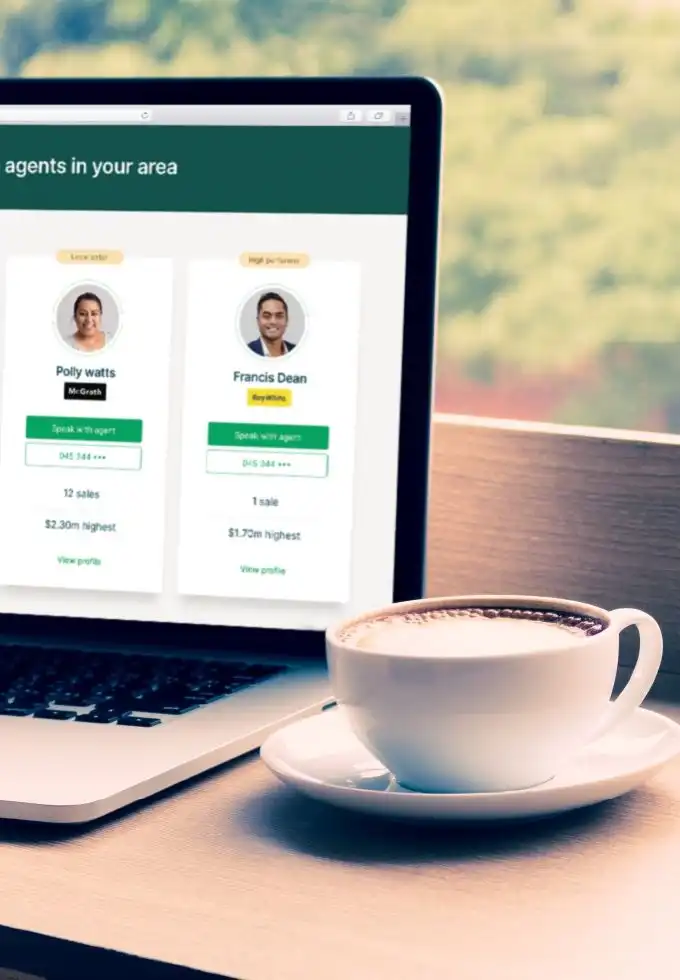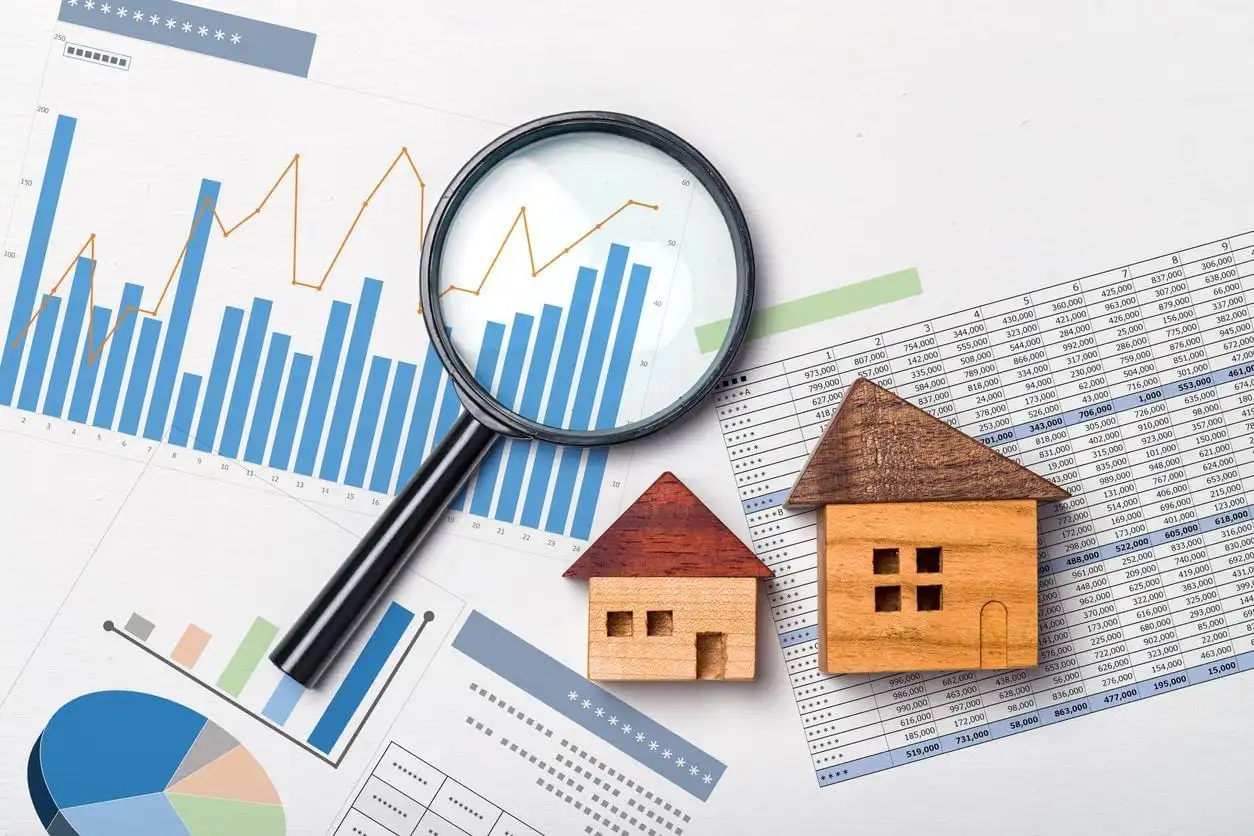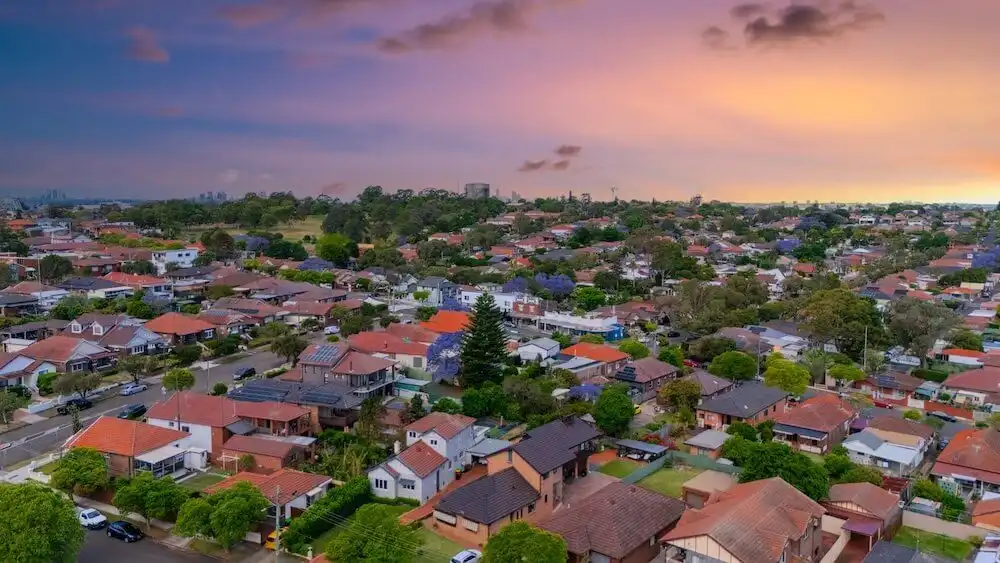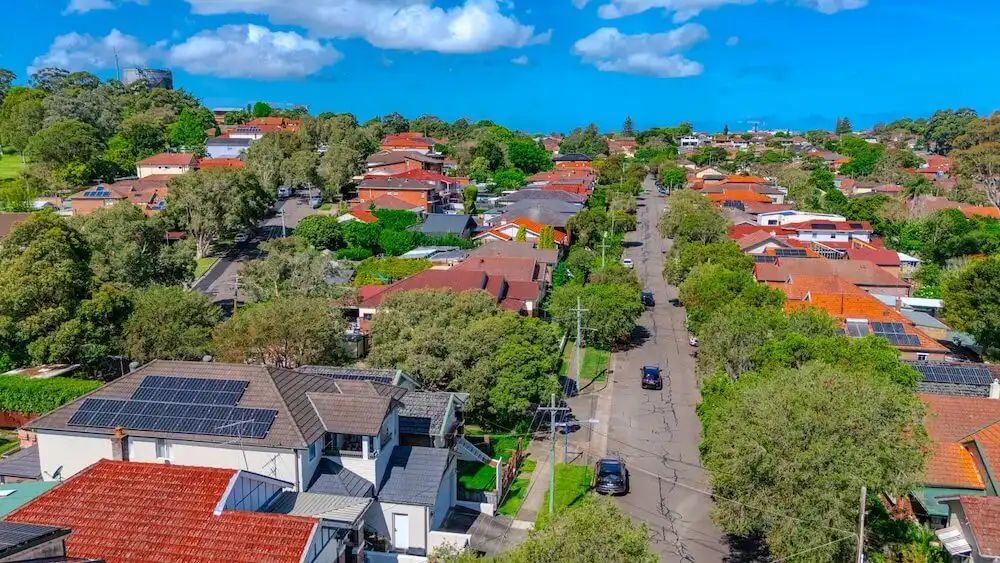Winter market heats up as price growth continues
The colder months have a reputation for being a quieter time in Australian property, but home values have continued to rise across the country over the winter.
Despite expectations of a third interest rate cut in July being dashed, growth remained strong and widespread. Now all eyes will be on the RBA to see whether rates will fall again in August.
Find out what's up ahead in this month's property market update.

Get a free property value estimate
Find out how much your property is worth in today’s market.
Australian property prices: July 2025
The national median home price rose another +0.6 per cent in July according to Cotality's latest report.
That lifts total gains for the year so far to a considerable +3.1 per cent.
| Market | Month | Quarter | Annual | Median value |
|---|---|---|---|---|
| Sydney | 0.6% | 1.8% | 1.6% | $1,228,435 |
| Melbourne | 0.4% | 1.2% | 0.5% | $803,424 |
| Brisbane | 0.7% | 2.3% | 7.3% | $934,623 |
| Adelaide | 0.7% | 1.5% | 7.0% | $843,339 |
| Perth | 0.9% | 2.6% | 6.5% | $831,921 |
| Hobart | 0.1% | 0.1% | 1.9% | $673,383 |
| Darwin | 2.2% | 5.6% | 8.5% | $549,371 |
| Canberra | 0.5% | 1.3% | 0.5% | $861,281 |
| Combined capitals | 0.6% | 1.8% | 3.0% | $926,854 |
| Combined regional | 0.6% | 1.7% | 5.9% | $689,369 |
| Australia | 0.6% | 1.8% | 3.7% | $844,197 |
Source: Cotality (formerly CoreLogic)
It was another solid month for Sydney and Melbourne, climbing +0.6 per cent and +0.4 per cent respectively, bringing Sydney to a new record high.
Also reaching fresh peaks were Brisbane, Adelaide and Perth, which returned to dominant form, rising between +0.7 per cent and +0.9 per cent.
Darwin's explosive run continued with a booming +2.2 per cent growth for the month. Canberra maintained a steady pace at +0.5 per cent, with Hobart holding close to flat with a nominal gain of +0.1 per cent.
Looking regionally, Queensland, SA and WA were again the star performers for the month, though NSW and Victoria also saw moderate uplifts.
"At the national level, the pace of growth in housing values is no longer accelerating," Cotality’s research director, Tim Lawless, explained.
"Rather, we have seen growth rates holding a little above half a per cent from month to month since May as the opposing influence of low supply, falling interest rates and rising confidence run up against affordability constraints and lingering uncertainty."
Three key takeaways from the current market
A number of 2025 property trends have become more firmly entrenched while other shifts are now just emerging. Here are the headline issues worth tracking.
A shortage of listings is again driving prices up
Growth has been relatively consistent and broad-based so far this year, with falling interest rates being one of the key drivers of that uplift.
But another major factor has been what Cotality calls "persistently low inventory levels," which have concentrated buyer competition and kept price gains steady.
Cotality's data shows that, nationally, listings are tracking -19 per cent lower than the five-year average, meaning there's a clear shortage of properties available to buy.
At the same time, the annual volume of sales is +1.9 per cent higher than the five-year average. Clearly, demand is far outweighing supply.
Auction clearance rates have been sitting above the decade average since mid-May, indicating that the balance of power remains in the seller's court.
The gap between houses and units is at a record high
It was only 12 months ago when unit prices were growing at a notably faster rate than houses.
The shift made sense, given that worsening affordability pressures and high interest rates were pushing many buyers — particularly first home buyers — towards cheaper options.
In 2025, that trend has reversed, and houses are once again gaining at a more rapid pace. Since January, national house prices have risen +3.3 per cent compared to +2.1 per cent for units.
As a result, the median gap between house and unit prices is at a record level — the median Australian house now costs $223,000, or +32.3 per cent more, than the median unit.
Cotality suggests that the resurgence of houses is partly to do with this year's rate cuts, as more expensive markets have greater sensitivity to interest rates.
"Such a wide difference comes amid ongoing affordability constraints and a lack of newly built multi-unit housing supply, which seems counterintuitive," Mr Lawless said.
"Clearly, demand preferences are still weighted towards detached housing options despite the substantially lower price points available across the unit sector."
Rental growth has accelerated after a period of slowing
It may have been a strong year so far for property sale prices, but until recently, it's been a softer time for the rental market.
Rents surged in the years since the start of the pandemic, and vacancy rates plunged towards historic lows once borders reopened and population growth erupted.
While rents may not have declined at any point, they certainly slowed towards the latter stages of 2024 and have been moving at a more moderate pace — until the last few months.
Cotality data showed rents were up nationally by +1.1 per cent over the three months to July, with units seeing the bulk of that uplift.
Mr Lawless cautioned that "the reacceleration in rental growth is clearly bad news for renters, where the median income household would already need around a third of their pre-tax income to pay rent."
The news is less sour for investors, though rental yields are slipping slightly too, as property value increases outweigh the uptick in rental income.
Gross rental yields in July sat at 3.68 per cent for the country, down from 3.71 per cent in April.
What's next for Australian property?
There were overwhelming expectations that the Reserve Bank would deliver another interest rate cut at their July meeting, but it wasn't to be.
Many experts are predicting a cut in August with high confidence, though. Westpac's chief economist, Luci Ellis, is among the majority forecasting another move down this month.
"We therefore expect the [RBA] to cut rates by 25bps at its August meeting, to 3.6 per cent. Further cuts in November, February 2026 and May 2026, also look increasingly likely," she said.
The impacts of rate cuts so far in 2025 have been clear, pushing prices higher, improving consumer confidence, and increasing buyer activity and budgets via stronger borrowing power.
Mr Lawless also noted that low housing supply is a feature of our property markets that is likely to continue "for some time" as the building sector struggles to keep up with the necessary housing construction rates.
Not everything is pointing in the direction of accelerating price growth, though. Cotality's report raises the point that worsening affordability "poses a significant barrier to a material rise in housing prices."
There are also geopolitical uncertainties around ongoing conflicts in Ukraine and the Middle East, while population growth on our own shores has slowed back to more typical levels.
"On balance, the tailwinds of lower interest rates, higher confidence and low housing supply are likely to outweigh the headwinds, providing the foundations for further modest growth in housing values in 2025."







